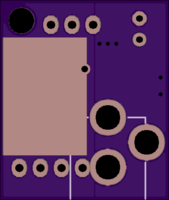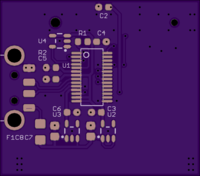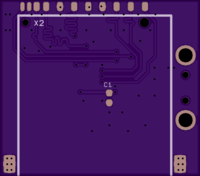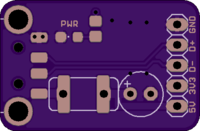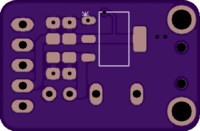OSH Park
Profile for dword1511
Shared projects
bldc-drv2
by
2
layer board of
0.80x0.95
inches
(20.32x24.08
mm).
Shared on
November 18th, 2016 15:25.
MTD6501-based sensorless BLDC motor driver
bldc-fan-driver
by
2
layer board of
0.74x1.22
inches
(18.80x30.94
mm).
Shared on
October 16th, 2016 02:15.
MTD6501-based sensorless BLDC motor driver
au6433
by
2
layer board of
1.39x1.22
inches
(35.26x30.99
mm).
Shared on
August 27th, 2016 03:14.
AU6433 SD card reader board.
AU6433 is Alcor’s USB 2.0 SD/MMC/MS/XD integrated card reader for laptops. It makes use of 48 MHz clock signal and 3.3V/1.8V rails, which are already available on the motherboard. When used standalone, a XO and 2 LDOs must be provided. When there is no card detection signal, it will not connect to USB and will have very little power consumption.
Some footprints on this PCB are slightly misaligned, but should still be solderable. U2 = 3.3V LDO, U3 = 1.8V LDO, U4 = SiT2001B 48 MHz MEMS oscillator. C1 = C6 = 1uF, C7 = C8 = 10uF, rest are 4.7uF. R1 = 4.7k (reset pull-up), R2 = 330ohm. Fuse should be 500mA but anything above 200mA should work. X2 = 3M SD-RSMT-2-MQ-WF.
usb-1117
by
2
layer board of
0.98x0.64
inches
(24.89x16.26
mm).
Shared on
June 14th, 2016 17:05.
USB breakout with 1117 LDO
LT1021-5 reference
by
2
layer board of
1.93x0.53
inches
(48.90x13.36
mm).
Shared on
June 7th, 2016 16:37.

